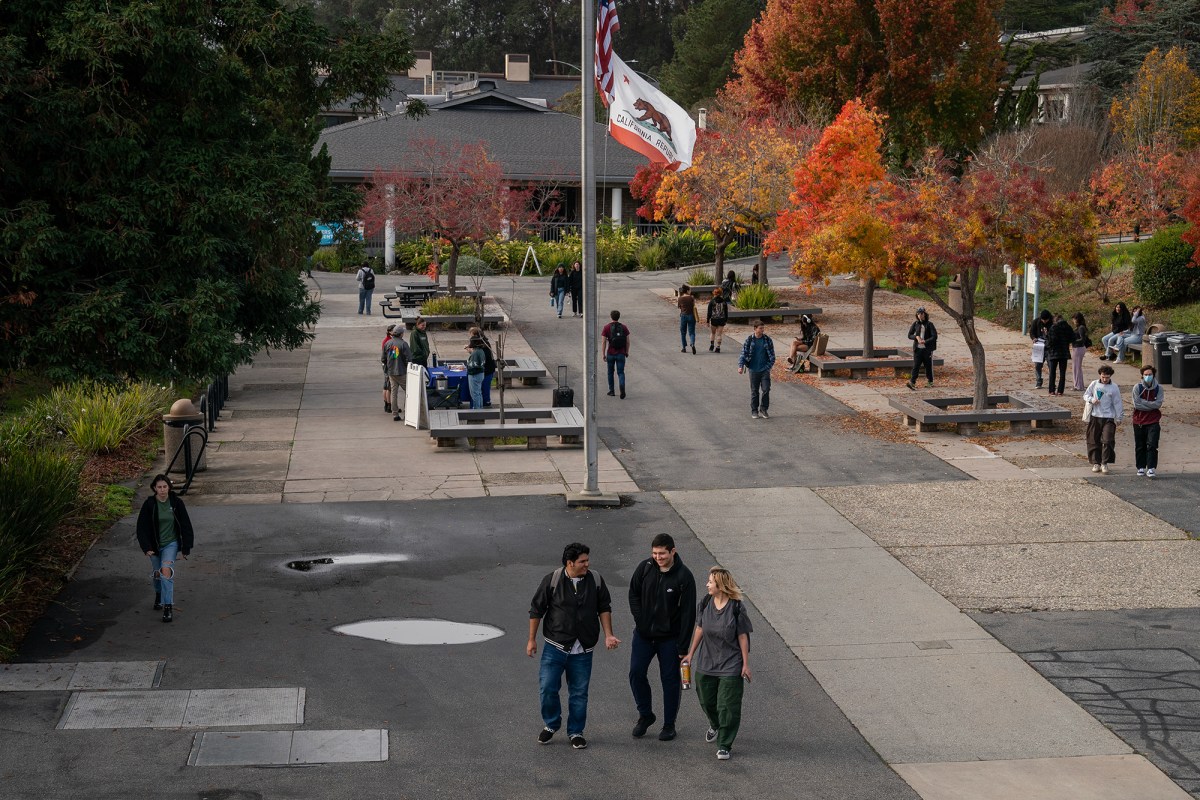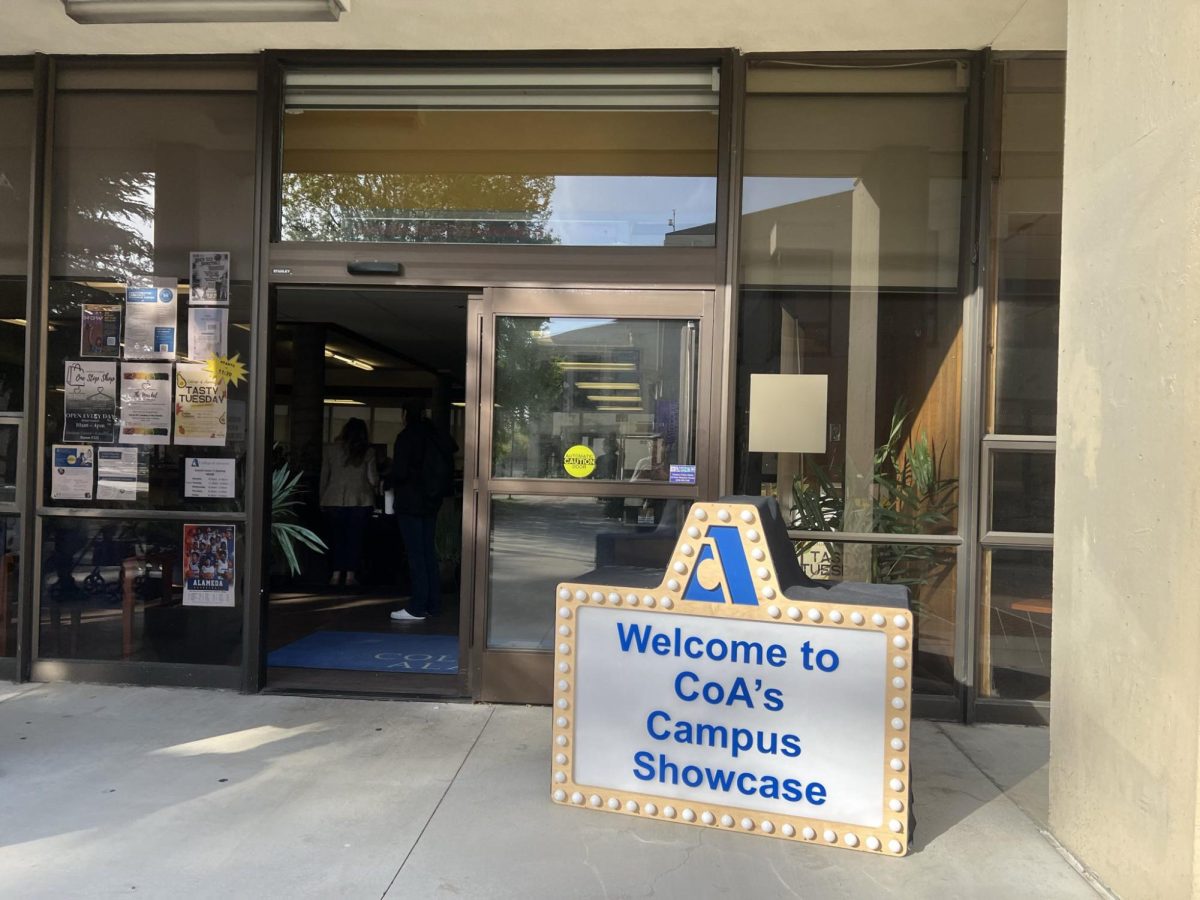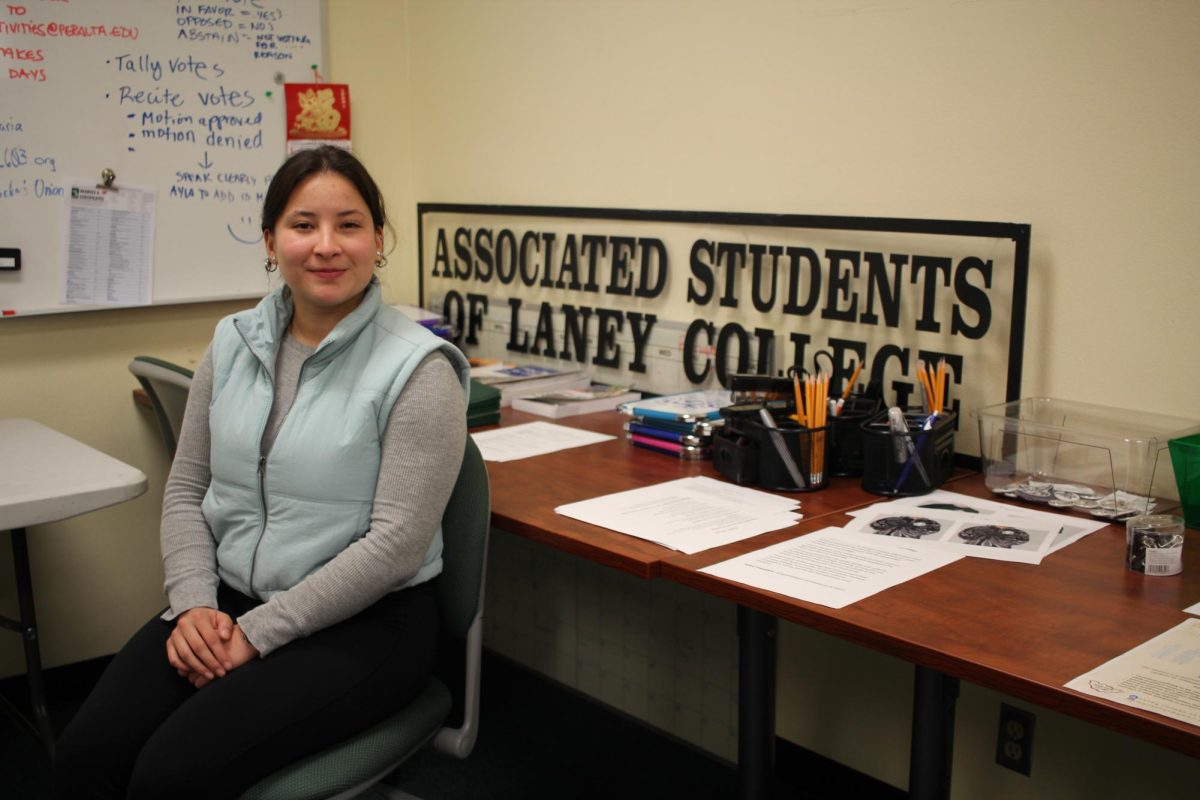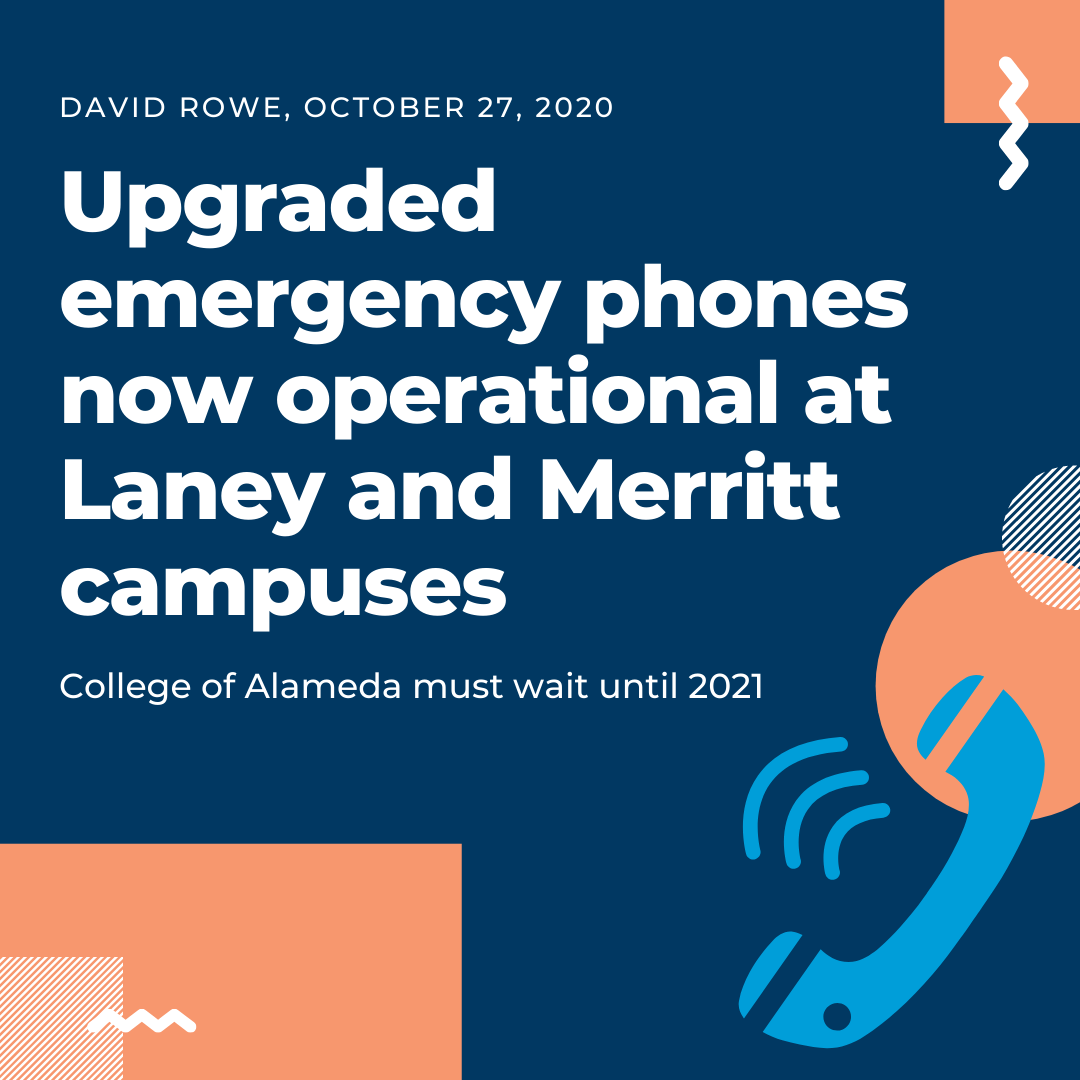
The Peralta Community College District recently completed the first phase of a long-planned upgrade of its emergency phone system.
Jack Herbert, project executive with Swinerton, the construction company managing the project, informed The Citizen that 24 non-functioning emergency phones have been replaced with digital models on the Laney and Merritt campuses. Fourteen of these are at Laney with the remaining 10 at Merritt, according to Herbert. The emergency phones are manufactured by Zenitel, a Norway-based company with its US headquarters in Kansas City, MO.
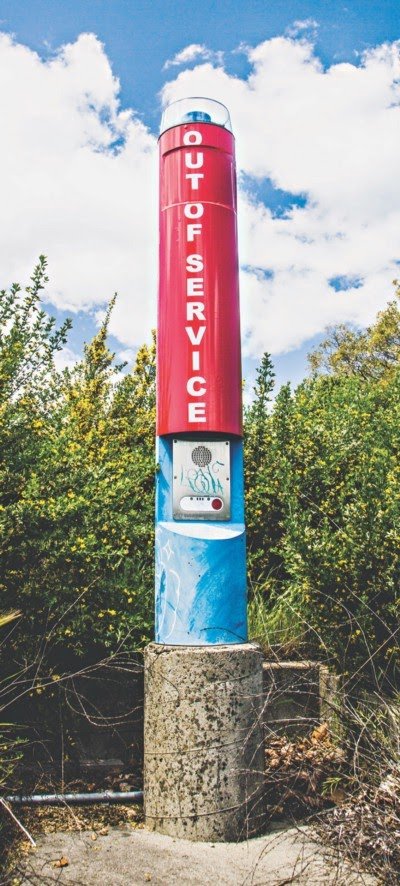
Thirty-six additional digital emergency phones will be installed in the second phase of the project, according to Herbert, expected to be completed by the end of 2021. Twelve of these will be installed at Merritt, 10 at Laney, 12 at College of Alameda, and 2 at the Aviation School near the Oakland Airport, which is an off-site COA program. No emergency phones are planned for installation at Berkeley City College.
These installments represent the culmination of an arduous five-year process that began when the district hired Security by Design in 2015 to provide an assessment of the emergency phones and a plan for their replacement. As reported in The Laney Tower in 2018, the contract for the consulting company was extended multiple times and the project cost inflated from $39,550 to $188,510. An additional $1.3 million contract with OJO Technologies was approved in 2018. The Laney Facilities and College Operations office announced the first new emergency phones were operational in its February 2019 newsletter and predicted the entire project would be completed by the end of that month. It ultimately took another 14 months for OJO Technologies to complete the upgrade, with the supervision of Swinerton during the final four months of the project.
Herbert explained that the current project “is not to repair the old phones, but to replace the existing defunct analog emergency phones with new infrastructure and digital phones that communicate by voice and video with the sheriff’s department.”
While emergency calls will be routed to the Alameda County Sheriff’s Office (ACSO) through the end of the calendar year, it is unclear who will receive them after that, because the Peralta Board of Trustees decided not to extend its long-standing contract with ACSO at its meeting on June 23. While a community policing model has been discussed as an alternative, no specific plan has yet been approved.
Interim Vice Chancellor of General Services Leigh Sata plans to update the board of trustees at their regular meeting on October 27 on the security options being considered to replace ACSO.
In an effort to provide students and faculty with a more reliable safety tool, the district introduced the CampusShield smartphone app in December 2016. The app provides an emergency button to contact police services and the ability to submit an anonymous tip. According to Mark Johnson, executive director 0f marketing, communication & public relations for the district, an estimated 300 individuals use the CampusShield app which has not yet been used to report an emergency.
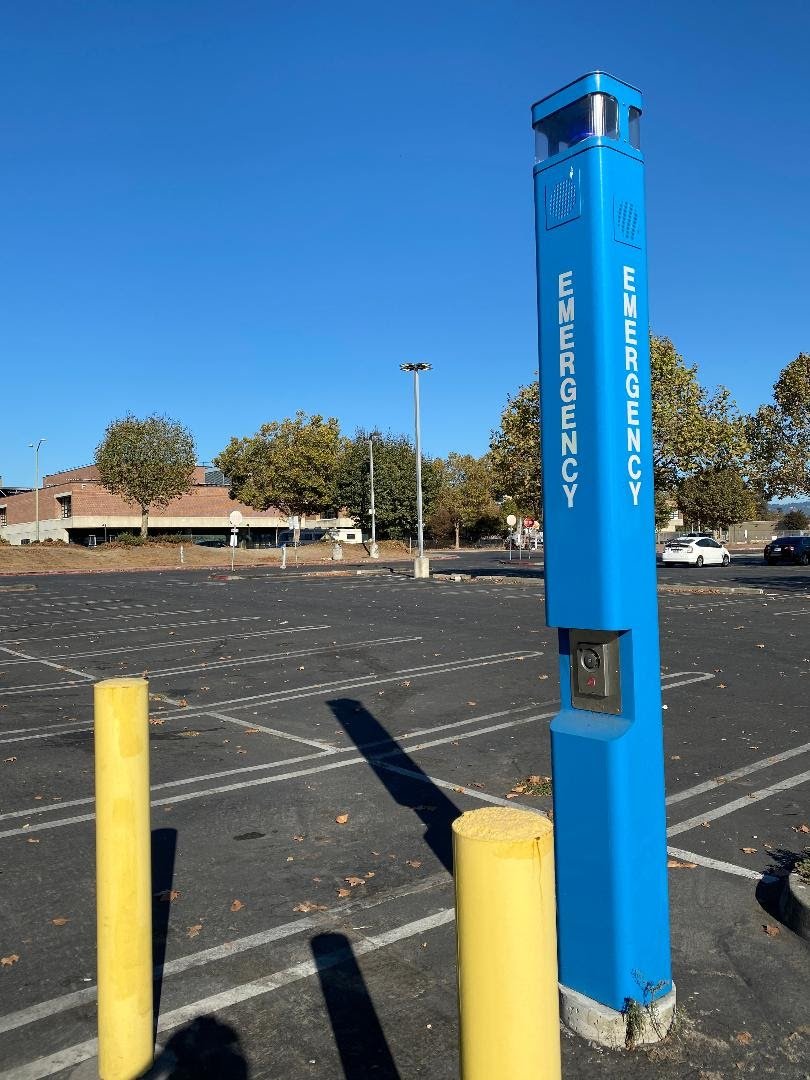
Replacement of the emergency phones is but one item on a long list of “critical repairs, safety, and compliance issues” being addressed by Sata. These projects, itemized in a report he delivered to the board of trustees in May, include work on ADA (Americans with Disabilities Act) upgrades, elevator repairs, fire alarm maintenance and new wiring for parking lot lights.
Peralta student journalists have long covered problems with the emergency phones and other maintenance-related issues.
A 2005 article in The Laney Tower confirmed that just 11 of the 47 emergency phones on the Laney campus were operational. Ten years later, the Tower reported that only six of Laney’s 23 emergency phones were functioning properly, noting that “one functions though inaudible.” In a pair of front-page stories by Saskia Hatvany in April and May of 2018, The Tower reported “80 percent of the ‘Code Blue’ emergency phones have fallen into disrepair” and provided an in-depth history of the troubled emergency phones, which were initially installed in the 1980s by Johnson Controls.
The Tower’s investigative reporting attracted the attention of local Fox TV affiliate KTVU in Oakland. That station ran a story in August 2019 entitled “Some emergency phones on community college campuses broken for nearly a decade” that attracted widespread attention. Hatvany, currently a freelance writer for The Sacramento Bee, was featured in the KTVU story. She observed that while district officials had “good intentions,” her reporting made her realize “intentions don’t always get the job done.” In his May 2020 report to the board, Sata referred to the KTVU coverage as an “unflattering news report.”

